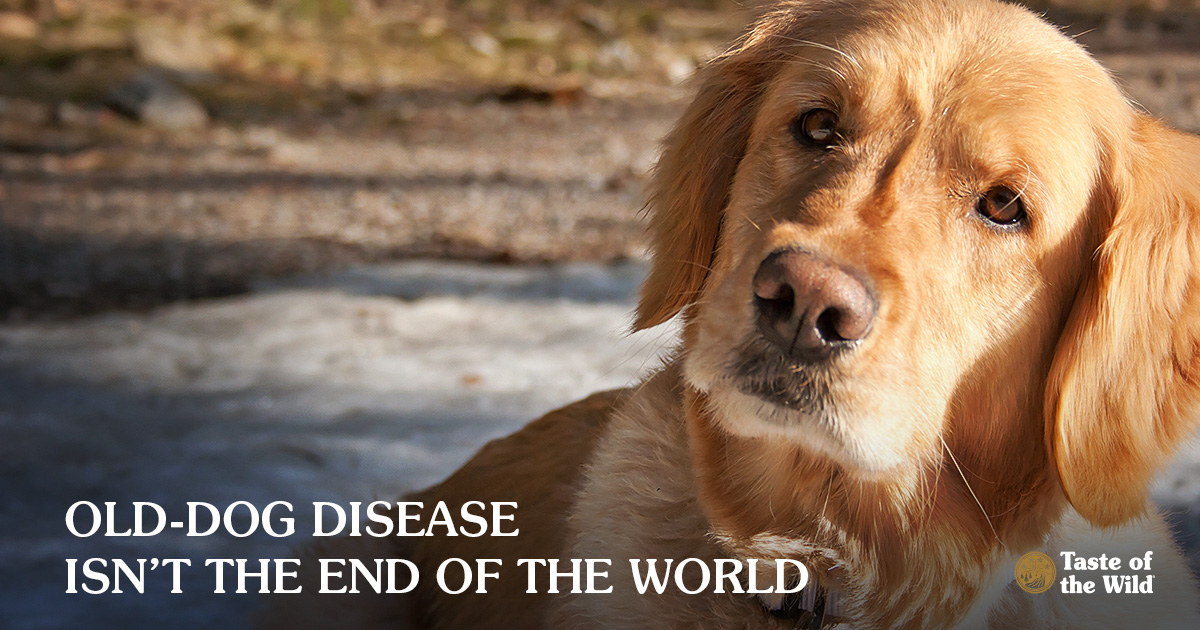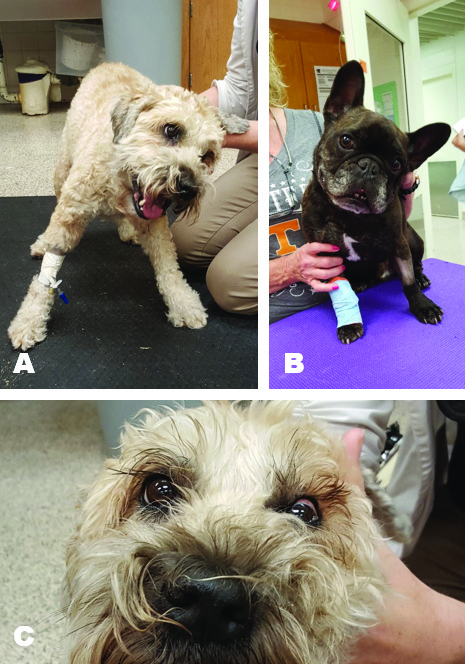Old dog vestibular disease and stroke both affect an older dog’s balance, but vestibular disease results from a problem in the inner ear or brainstem, while stroke happens when there is a lack of blood flow to the brain. Older dogs are prone to several medical conditions.
As a loving pet owner, it is essential to be aware of two conditions, old dog vestibular disease, and stroke, that significantly impact the quality of life of your furry friend. Both conditions display similar symptoms that include head tilt, disorientation, loss of balance, and more, making it difficult to differentiate between the two.
However, there are differences, and diagnosing them correctly is essential. This article aims to provide a comprehensive understanding of old dog vestibular disease and stroke, their symptoms, and how they differ.

Credit: www.tasteofthewildpetfood.com
Understanding Old Dog Vestibular Disease
Old dog vestibular disease is a common condition in senior dogs that can be mistaken for a stroke. It occurs when there is a disruption in the dog’s balance and coordination, often leading to a head tilt, loss of coordination, and difficulty walking.
The cause of the condition is not yet fully understood, but it is believed to be related to the inner ear, brainstem, or an underlying medical condition. Symptoms of old dog vestibular disease can be frightening for pet owners, but it is important to know that many dogs recover from the condition with proper treatment and care.
It is crucial to consult with a veterinarian immediately if you suspect your dog may be suffering from old dog vestibular disease.
Understanding Stroke In Old Dogs
Older dogs often experience illnesses and conditions that can cause difficulty in their movement or behavior. Two commonly mistaken conditions in older dogs are vestibular disease and stroke. While vestibular disease is an issue with the inner ear, strokes affect the brain and can have greater consequences.
A stroke occurs when there is a blockage of blood flow to the brain leading to damage or death of brain cells. Symptoms of stroke include sudden weakness or loss of control in body movements, seizures, loss of balance, and inability to walk.
The causes of a stroke in older dogs can range from high blood pressure, heart disease, or an injury. If you suspect your dog has suffered from a stroke, seek immediate veterinary attention to help manage the condition.
Key Differences Between Old Dog Vestibular Disease And Stroke
Old dog vestibular disease and stroke are two conditions that can affect the health of senior dogs. One key difference is the duration of symptoms. In vestibular disease, symptoms appear suddenly but tend to improve over time. On the other hand, stroke symptoms develop gradually and may worsen over time.
Recovery and management options also differ between the two conditions. Vestibular disease can often be managed with supportive care, while stroke may require more intensive medical treatment. When it comes to diagnosis and treatment, a thorough examination and diagnostic tests are necessary to accurately differentiate between the two conditions. Overall, it’s important to work closely with a veterinarian to properly diagnose and manage these conditions in senior dogs.
Tips And Recommendations
Old dogs suffering from vestibular disease and stroke require special attention and care. Owners can manage the vestibular disease at home by providing a comfortable and safe environment and feeding their dogs with nutrition-rich meals. Rehabilitation for stroke-impaired dogs involves physiotherapy and medication, which can help improve mobility and prevent further complications.
Support groups for owners can provide emotional, social, and psychological support, as well as provide valuable information on managing their dogs’ conditions. Always consult with a veterinarian before making any decisions regarding the health of an old dog affected by vestibular disease or stroke.
Prevention Strategies For Old Dog Vestibular Disease And Stroke
Old dog vestibular disease and stroke present specific health risks to aging canines. As a responsible pet owner, it’s important to take proactive measures to reduce the risk of such ailments. Some strategies include keeping your dog active and providing opportunities for socialization through regular walks and playtime.
Identify potential risk factors, such as obesity or poor diet, and take steps to address them. Regular veterinary checkups can also help to detect and address any underlying health concerns before they escalate. By taking these preventative measures, pet owners can help to ensure their furry friends enjoy a happy, healthy, and active lifestyle in their golden years.
FAQ On Old Dog Vestibular Disease vs. Stroke
What Are The Symptoms Of Old Dog Vestibular Disease?
The disease symptoms include head tilt, loss of balance, circling, and rapid eye movement.
Can Dogs Recover From Old Dog Vestibular Disease?
Yes, most dogs recover from vestibular disease within a few days to weeks with supportive care.
How Is Old Dog Vestibular Disease Diagnosed?
The disease is diagnosed through a physical exam, medical history, blood tests, and imaging studies like X-rays or MRI.
What Is The Difference Between Old Dog Vestibular And Stroke?
Old dog disease is not caused by a blood clot or restricted blood flow, while stroke is. This disease can treated, while a stroke may be irreversible and require lifelong medical management.
What Is The Treatment For Old Dog Vestibular Disease?
The treatment for old dog disease is supportive care, consisting of medication to relieve symptoms and prevent injury, adequate hydration, and physical therapy to retrain balance and coordination.
Conclusion
It can be difficult to distinguish between vestibular disease and stroke due to the similar symptoms that they both present. Therefore, it’s important to have your dog examined by a veterinarian to determine the root cause of their condition. Additionally, it’s important to recognize the signs early on and seek prompt medical attention to improve the chances of a successful recovery.
With proper care and attention, you can help your furry companion get back on their feet and enjoy a happy and healthy life again. Remember to consult your vet if you notice any unusual changes in your dog’s behavior or symptoms so that you can work together towards finding a solution.



